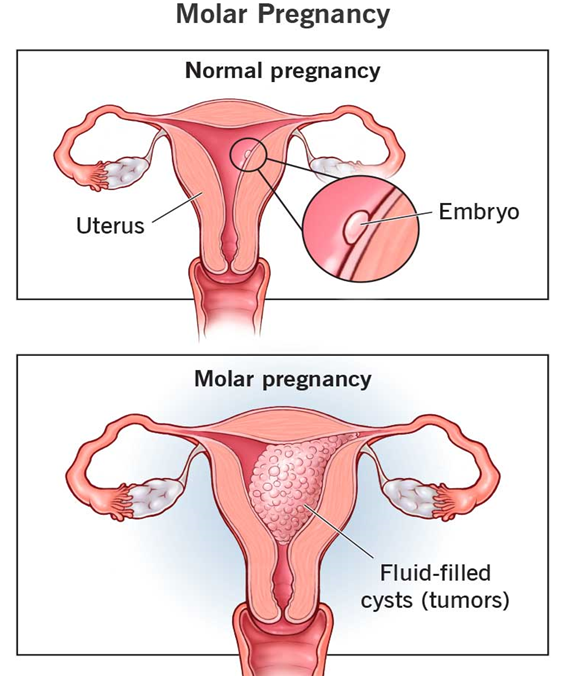A nurse is monitoring a client who is 3 days postpartum and is breastfeeding. The nurse notes that the fundus is three fingerbreadths below the umbilicus, lochia rubra is moderate, and the breasts are full and warm to palpation. Which of the following interpretations of these findings should the nurse make?
Additional interventions not indicated at this time.
Application of a heating pad to the breasts is indicated.
The client should be advised to remove her nursing bra.
The client is exhibiting early indications of mastitis.
The Correct Answer is A
Choice A Reason:
The findings described are typical for a client who is 3 days postpartum. The fundus being three fingerbreadths below the umbilicus, moderate lochia rubra, and full, warm breasts are all normal postpartum changes. The fundus should gradually descend into the pelvis, and lochia rubra is expected during the first few days postpartum. Breast fullness and warmth indicate the onset of milk production, which is normal and does not require additional interventions.
Choice B Reason:
Applying a heating pad to the breasts is not indicated in this scenario. While heat can sometimes be used to relieve engorgement, it is not necessary unless the client is experiencing significant discomfort or other symptoms that suggest a need for intervention. The described findings do not indicate such a need.
Choice C Reason:
Advising the client to remove her nursing bra is not appropriate. Wearing a well-fitting nursing bra can provide support and comfort, especially as the breasts become fuller with milk production. There is no indication from the findings that the client should remove her nursing bra
Choice D Reason:
The client is not exhibiting early indications of mastitis. Mastitis typically presents with symptoms such as localized breast pain, redness, fever, and flu-like symptoms. The described findings of full and warm breasts are normal for the postpartum period and do not suggest an infection.
Nursing Test Bank
Naxlex Comprehensive Predictor Exams
Related Questions
Correct Answer is B
Explanation
The correct answer is b) “We do routine hearing screenings on newborns. You’ll know the results before you leave the hospital.”
Choice A reason:
The statement “There is no need to worry about that. Most forms of hearing loss are not inherited” is not entirely accurate. While it is true that not all forms of hearing loss are inherited, genetic factors can play a significant role in hearing loss. Approximately 50-60% of hearing loss in infants is due to genetic causes. Therefore, dismissing the concern without proper screening is not advisable.
Choice B reason:
Routine hearing screenings are conducted on newborns to detect any hearing issues early. These screenings are typically performed before the baby leaves the hospital. The two main types of newborn hearing screenings are Otoacoustic Emissions (OAEs) and Automated Auditory Brainstem Response (AABR). These tests are safe, painless, and can identify hearing loss early, allowing for timely intervention. Early detection is crucial for the development of speech, language, and social skills.
Choice C reason:
Clapping hands loudly to see if the baby startles is not a reliable method to determine hearing ability. While a startle response might indicate that the baby can hear, it does not provide comprehensive information about the baby’s hearing capabilities. Newborn hearing screenings are more accurate and can detect even mild hearing loss.
Choice D reason:
Observing how the baby looks at you when you speak is also not a reliable method to assess hearing. Babies can respond to visual cues and vibrations, which might give the impression that they can hear. However, this method does not provide a definitive assessment of the baby’s hearing ability. Professional hearing screenings are necessary to accurately determine hearing status.
Correct Answer is C
Explanation
Choice A Reason:
A rapid decline in human chorionic gonadotropin (hCG) levels is not typically associated with a hydatidiform mole. In fact, hCG levels are usually elevated in cases of hydatidiform mole due to the abnormal growth of trophoblastic tissue. Elevated hCG levels can lead to symptoms such as severe nausea and vomiting, which are more indicative of this condition.
Choice B Reason:
An irregular fetal heart rate is not a common finding in hydatidiform mole cases. In a complete molar pregnancy, there is no viable fetus, and therefore, no fetal heart rate can be detected. In partial molar pregnancies, there may be some fetal tissue, but it is typically not viable and does not develop a regular heart rate.
Choice C Reason:
Excessive uterine enlargement is a hallmark sign of a hydatidiform mole. This condition causes the uterus to grow more rapidly than it would in a normal pregnancy due to the abnormal proliferation of trophoblastic tissue. This rapid growth can lead to a uterus that is significantly larger than expected for the gestational age.

Choice D Reason:
Profuse, clear vaginal discharge is not specifically associated with hydatidiform mole. While vaginal discharge can increase during pregnancy, the discharge associated with a molar pregnancy is typically dark brown or red due to bleeding from the abnormal tissue. Clear discharge is more commonly associated with normal pregnancy changes or other conditions.
Whether you are a student looking to ace your exams or a practicing nurse seeking to enhance your expertise , our nursing education contents will empower you with the confidence and competence to make a difference in the lives of patients and become a respected leader in the healthcare field.
Visit Naxlex, invest in your future and unlock endless possibilities with our unparalleled nursing education contents today
Report Wrong Answer on the Current Question
Do you disagree with the answer? If yes, what is your expected answer? Explain.
Kindly be descriptive with the issue you are facing.
